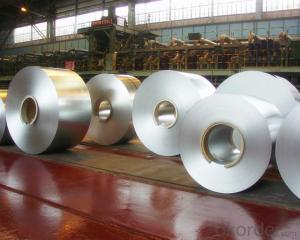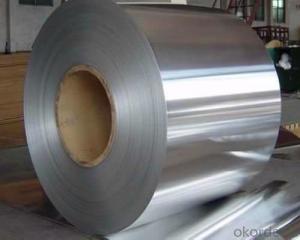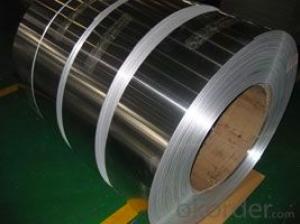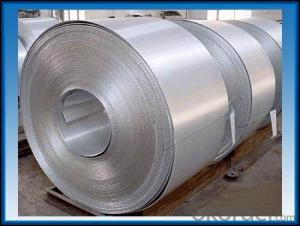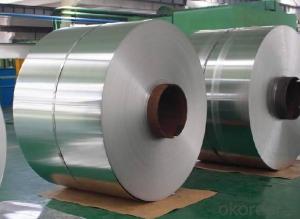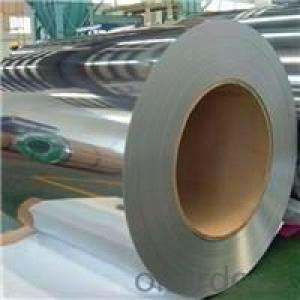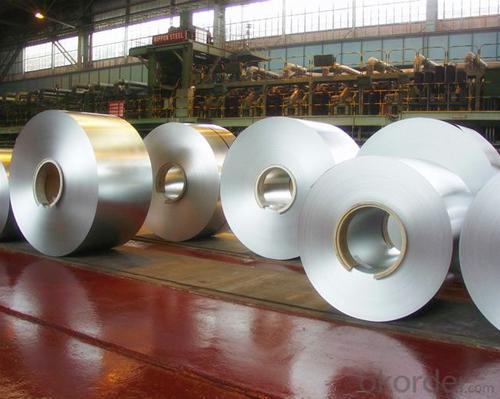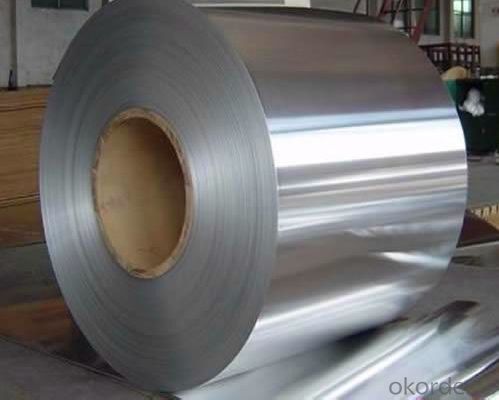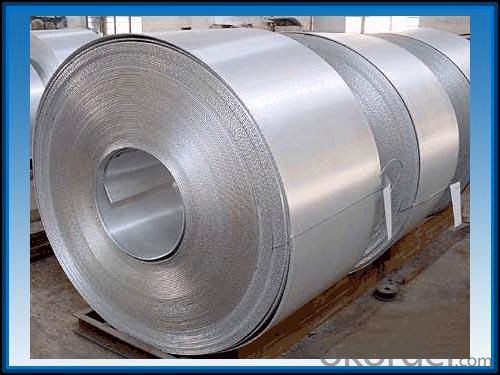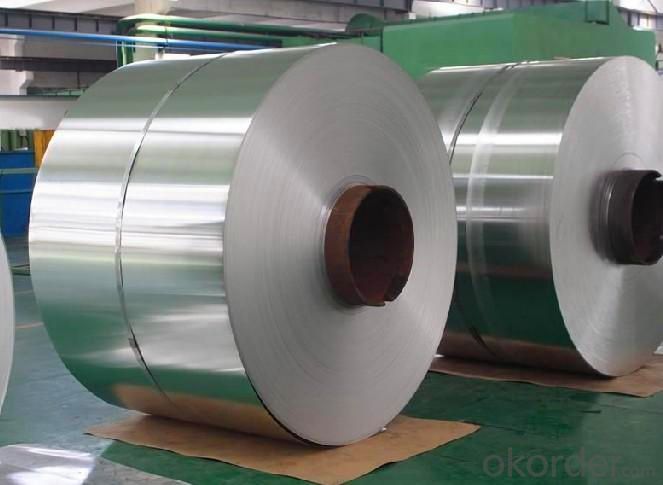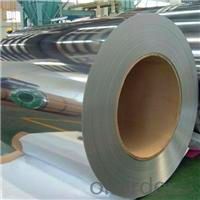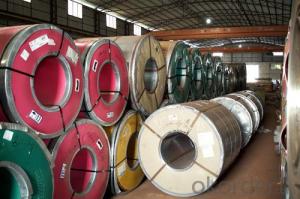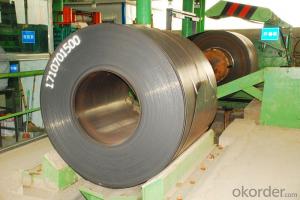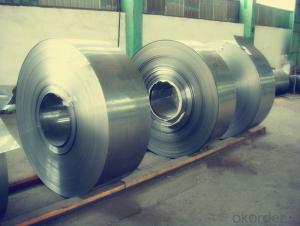Stainless Steel Coil Hot / Cold Rolled Coil 201 Coil
- Loading Port:
- Lianyungang
- Payment Terms:
- TT OR LC
- Min Order Qty:
- 400 m.t.
- Supply Capability:
- 5000 m.t./month
OKorder Service Pledge
OKorder Financial Service
You Might Also Like
201 Hot Rolled Stainless Steel Coil Specifications
THK:2.3/2.5/3.0/4.0mm
Width:485/510/550/610/1010/1240mm
Face:No.1
201 Hot rolled stainless steel Coil Application
Stainless steel is a production which not easy rust,acid resistance and corrosion resistance,so it is widely
used in light industry,heavy industry,daily necessities and the decoration industry.
201 hot rolled stainless steel coil, use to produce cold rolled stainless steel coil and stainless steel tube, pipe.
201 Hot Stainless Steel Coil Chemical Composition(WT%)
(C):≤0.15, (Si):≤0.75, (Mn):5.5~7.50, (Cr):16.0~18.0, (N):≤0.25, (Ni):3.50~5.50, (P):≤0.060, (S):≤0.030
201 Hot Rolled Stainless Steel Coil
Strength Of Extension:100,000 To 180,000 Psi;
Yield Strength:50,000 To 150,000 Psi
Elongation :55 To 60%;
Modulus Of Elasticity:29,000,000 Psi;
Density :.280lbs/Cubic Inch(7.93g/Cm3)
- Q: Are stainless steel strips resistant to UV radiation?
- Stainless steel strips are generally resistant to UV radiation. The reason for this is that stainless steel has excellent corrosion resistance, which also applies to UV radiation. The presence of chromium in stainless steel creates a protective oxide layer on the surface, preventing significant damage or degradation from UV radiation. Stainless steel is commonly used in outdoor settings where it is exposed to sunlight and UV radiation, such as architectural structures, automotive parts, and marine equipment. This further demonstrates its resistance to UV radiation. However, it's worth noting that the specific resistance of stainless steel strips to UV radiation may vary based on the grade and quality of the stainless steel used, as well as the duration and intensity of the UV exposure.
- Q: How do stainless steel strips perform in the presence of alkalis?
- Stainless steel strips generally perform well in the presence of alkalis. The corrosion resistance of stainless steel is primarily due to the presence of chromium, which forms a passive oxide layer on the surface of the steel. This oxide layer prevents the steel from reacting with the surrounding environment, including alkalis. Alkalis, such as sodium hydroxide (caustic soda) or potassium hydroxide, are typically strong bases that have a high pH. Stainless steel is known for its resistance to corrosion in alkaline environments, as the passive oxide layer provides a strong barrier against the alkali's attack. However, it is important to note that the performance of stainless steel in alkalis can vary depending on the specific grade of stainless steel being used and the concentration and temperature of the alkali solution. In some cases, highly concentrated or elevated temperatures can lead to localized corrosion or stress corrosion cracking in stainless steel. To ensure optimal performance, it is recommended to select the appropriate grade of stainless steel based on the specific alkali being used, and to consider factors such as concentration, temperature, and exposure time. Consulting with corrosion experts or stainless steel manufacturers can provide further guidance on the best stainless steel grade for a specific alkali application.
- Q: Are stainless steel strips resistant to erosion?
- Indeed, erosion is highly unlikely to affect stainless steel strips due to their exceptional resistance. Composed of iron, chromium, and other elements, stainless steel is an alloy that possesses remarkable properties in terms of corrosion resistance. The presence of chromium in stainless steel results in the formation of a protective passive layer on its surface, effectively preventing any interaction between the metal and its surrounding environment. As a result, the chemical reactions, moisture, and exposure to different atmospheric conditions that typically cause erosion are rendered ineffective against stainless steel strips. Consequently, these strips are perfectly suited for a wide range of applications that necessitate erosion resistance, such as marine environments, chemical processing plants, and outdoor structures that are exposed to harsh weather conditions.
- Q: What are the common tests performed on stainless steel strips?
- There are several common tests performed on stainless steel strips to ensure their quality and suitability for various applications. Some of these tests include: 1. Chemical Composition Analysis: This test determines the elemental composition of the stainless steel strip, including the percentage of various alloying elements such as chromium, nickel, and molybdenum. It helps verify if the material meets the required specifications and standards. 2. Mechanical Properties Testing: This involves evaluating the mechanical characteristics of the stainless steel strip, including its tensile strength, yield strength, elongation, and hardness. These properties are crucial in determining the material's strength and durability. 3. Corrosion Resistance Testing: Stainless steel is known for its excellent corrosion resistance. Tests such as salt spray testing, pitting corrosion testing, and intergranular corrosion testing assess the strip's resistance against various corrosive environments. These tests ensure that the stainless steel strip will perform well in its intended application. 4. Surface Finish Analysis: This test examines the surface quality of the stainless steel strip, including the presence of any defects, scratches, or blemishes. It ensures that the surface finish meets the required standards and provides the desired aesthetic appearance. 5. Dimensional Inspection: This test verifies the dimensional accuracy and tolerances of the stainless steel strip. It ensures that the strip's width, thickness, and length meet the specified requirements. 6. Microstructure Examination: This test involves analyzing the microstructure of the stainless steel strip using techniques like metallography and microscopy. It helps identify any potential defects or abnormalities that may affect the material's performance. These tests are essential in ensuring the quality, reliability, and performance of stainless steel strips in various industries, including automotive, construction, and manufacturing. By conducting these tests, manufacturers can deliver stainless steel strips that meet the highest standards and customer expectations.
- Q: What is the corrosion resistance of stainless steel strips in alkaline environments?
- In alkaline environments, stainless steel strips demonstrate exceptional resistance to corrosion. Their high chromium content enables the formation of a protective oxide layer on the surface when in contact with alkaline solutions, effectively halting any further corrosion. This oxide layer acts as a barrier, safeguarding the steel against the destructive impact of alkaline substances. Furthermore, stainless steel strips exhibit resistance against pitting and crevice corrosion, which are frequently encountered in alkaline environments. Hence, stainless steel strips are a dependable option for applications in alkaline environments where the utmost importance is placed on corrosion resistance.
- Q: How do you prevent rusting of stainless steel strips?
- To prevent rusting of stainless steel strips, there are several measures that can be taken: 1. Regular cleaning: Stainless steel strips should be cleaned regularly using mild soap or detergent and warm water. This helps remove any dirt, dust, or contaminants that could lead to corrosion. 2. Avoid exposure to corrosive substances: Stainless steel should be kept away from direct contact with corrosive substances such as acids, bleach, or saltwater. If any spills occur, they should be cleaned immediately to prevent prolonged exposure. 3. Dry thoroughly: After cleaning, stainless steel strips should be dried thoroughly to remove any moisture. Moisture can promote corrosion, so it is important to ensure the surface is completely dry. 4. Use protective coatings: Applying a protective coating, such as a clear lacquer or oil-based coating, can help create a barrier between the steel and the environment, reducing the risk of rusting. These coatings should be reapplied periodically to maintain their effectiveness. 5. Use proper storage methods: Stainless steel strips should be stored in a clean and dry environment, away from any sources of moisture or corrosive substances. Additionally, using padding or separators between strips can prevent them from scratching each other, which could lead to rusting. 6. Regular inspection: Periodically inspecting stainless steel strips for signs of corrosion or damage can help identify and address any potential issues early on. Promptly addressing any problems can help prevent further rusting and extend the lifespan of the strips. By following these preventive measures, the risk of rusting in stainless steel strips can be significantly reduced, ensuring their longevity and maintaining their appearance.
- Q: What are the common uses of stainless steel strips in the textile industry?
- Stainless steel strips are commonly used in the textile industry for various purposes such as fabric reinforcement, belt fastening, and tensioning systems. They provide strength and durability to fabrics, ensuring they can withstand the rigors of textile production processes. Additionally, stainless steel strips are also used in textile machinery, including looms and knitting machines, to facilitate smooth and efficient operations.
- Q: Are stainless steel strips resistant to sulfuric acid?
- Yes, stainless steel strips are generally resistant to sulfuric acid. Stainless steel is known for its corrosion resistance properties, and it has a high resistance to a wide range of chemicals, including sulfuric acid. However, the level of resistance may vary depending on the grade and composition of the stainless steel. In highly concentrated and hot sulfuric acid solutions, some types of stainless steel may experience limited corrosion. It is always recommended to consult with a materials specialist or refer to specific corrosion resistance charts to determine the suitability of stainless steel strips for a specific sulfuric acid application.
- Q: Are stainless steel strips suitable for roofing applications?
- Yes, stainless steel strips are suitable for roofing applications. Stainless steel is highly resistant to corrosion, making it an excellent choice for roofing materials, especially in areas with harsh weather conditions or high levels of pollution. Stainless steel strips offer durability, longevity, and low maintenance requirements, making them a cost-effective option in the long run. Additionally, stainless steel has a high strength-to-weight ratio, which means it can withstand heavy loads without compromising the structural integrity of the roof. Furthermore, stainless steel strips are fire-resistant and can effectively reflect sunlight, reducing heat absorption and energy costs. Overall, stainless steel strips are a reliable and practical choice for roofing applications.
- Q: What are the common thickness and width combinations for stainless steel strips?
- Depending on the specific applications and industry requirements, the common thickness and width combinations for stainless steel strips can vary. However, there are some standard thickness and width combinations that are frequently used. Thin stainless steel strips usually have a thickness ranging from 0.01mm to 3mm, and the width typically falls between 5mm and 500mm. These thin strips are commonly found in industries such as electronics, automotive, and medical. Medium thickness stainless steel strips, on the other hand, can have a thickness ranging from 3mm to 20mm, with a width that can vary between 100mm and 1500mm. These medium thickness strips are often utilized in applications such as construction, architecture, and machinery manufacturing. Thicker stainless steel strips, which are commonly used in heavy industries like oil and gas, petrochemical, and shipbuilding, can have a thickness exceeding 20mm and a width wider than 1500mm. It should be noted that these thickness and width combinations are not exhaustive and can be adjusted based on the specific requirements of each project. Manufacturers and suppliers of stainless steel strips are often able to customize the thickness and width according to the customer's needs and specifications.
Send your message to us
Stainless Steel Coil Hot / Cold Rolled Coil 201 Coil
- Loading Port:
- Lianyungang
- Payment Terms:
- TT OR LC
- Min Order Qty:
- 400 m.t.
- Supply Capability:
- 5000 m.t./month
OKorder Service Pledge
OKorder Financial Service
Similar products
Hot products
Hot Searches
Related keywords
